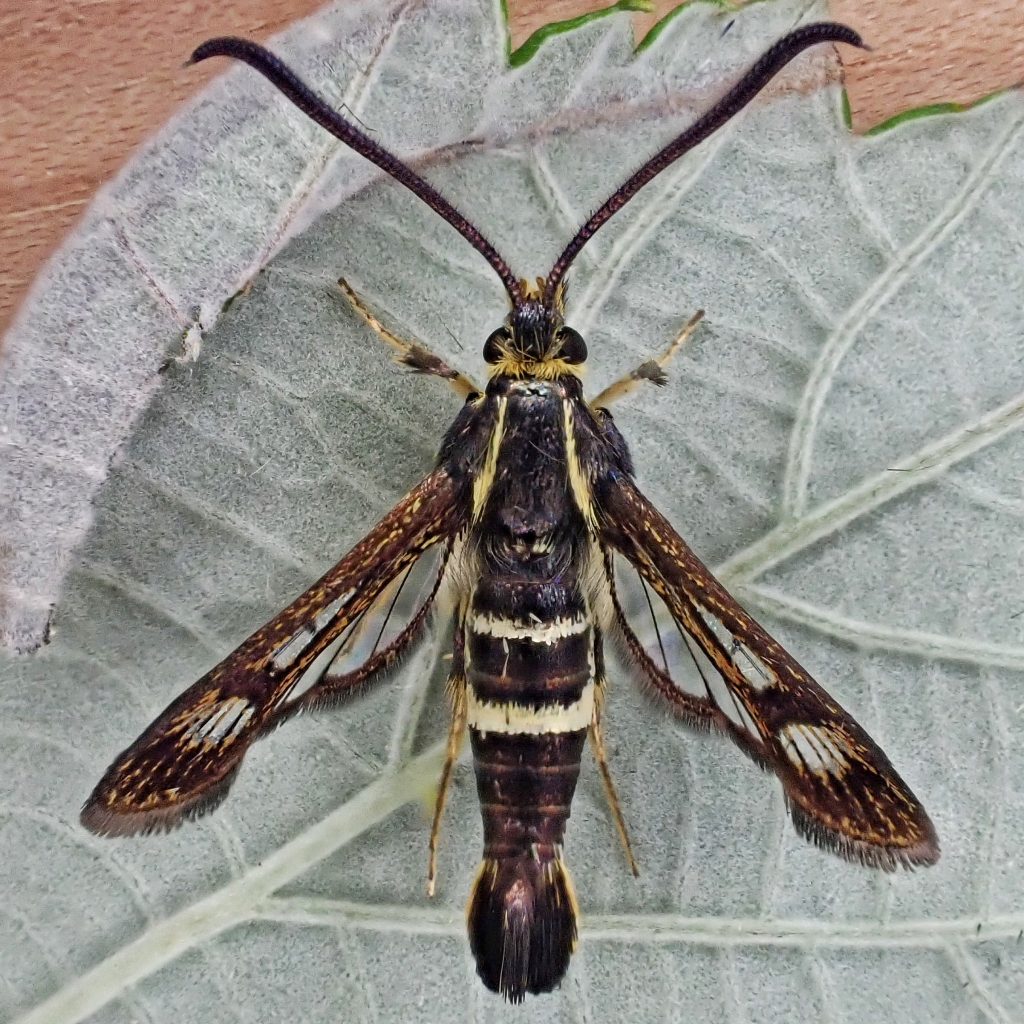
I am so excited to have finally found, photographed, identified, and now profiled a clearwing moth! The only one I had even seen before wasn’t in the clearwing moth family (Sesiidae), but was instead a Sphinx moth in the genus Hemaris, and I didn’t get a photo of that one. And I almost didn’t get photos of these strawberry crown moths (Sesiidae) either, because I didn’t have a camera. This was because on the previous day, while walking along a patch of blackberry bushes with a camera but no net, I saw and photographed some intriguing Syrphid flies, but as is so often the case, the photos didn’t show diagnostic details. So the following day I went back, this time with a net but not a camera.
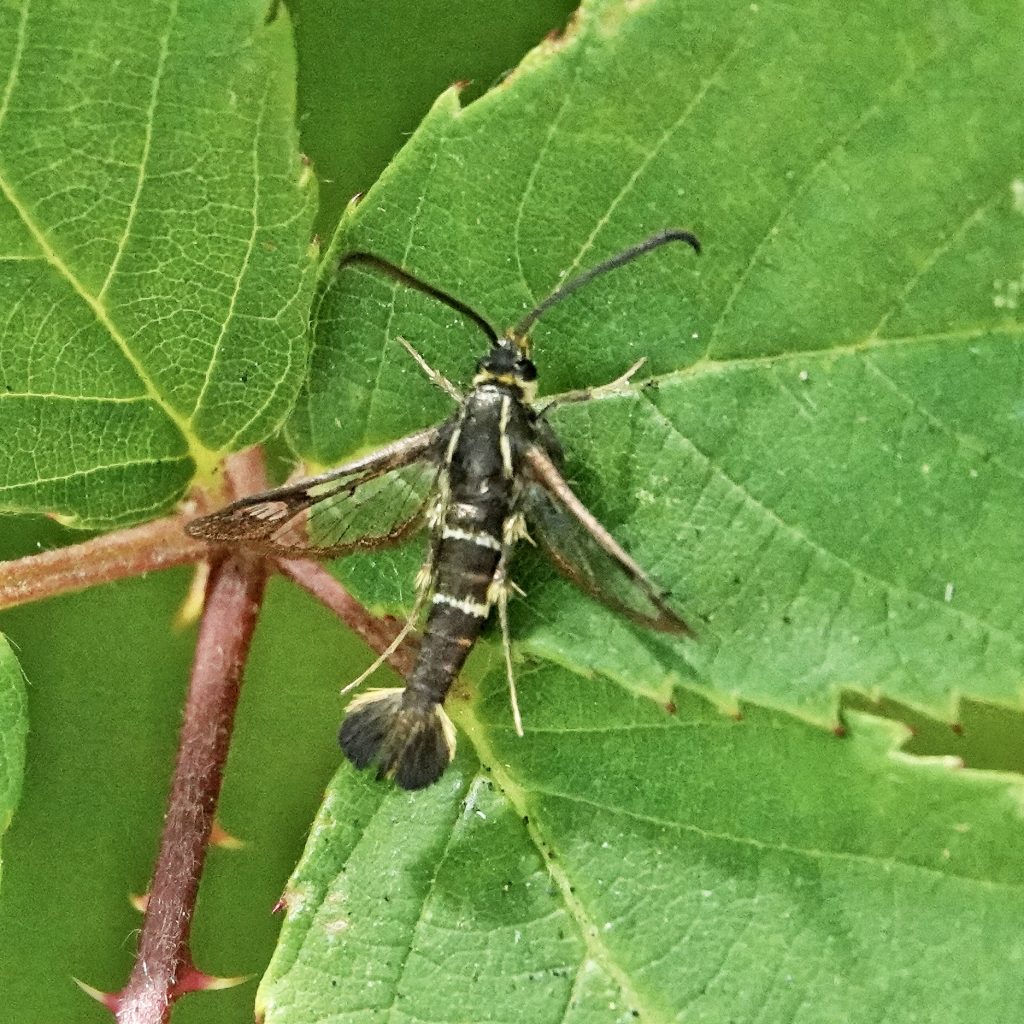
You may wonder why I don’t always carry both a net and a camera, since a specimen in hand is so often required for positive identification, yet in situ photographs are more aesthetically pleasing. And the answer is that I often do carry both, with the camera dangling from my neck and the handle of the net tucked inside the back of my shirt so that the net itself appears to bloom from my neck, where I can unholster it fairly rapidly. But swinging a net without bashing the camera with my arm seems to regularly be beyond my capabilities, and I frequently end up at cross purposes, attempting to photograph something I should have netted, or attempting to net something I could have photographed, and ending up without any documentation at all. And in some, mostly urban, settings a net can attract unwanted attention from people who think I’m doing something illegal. Plus, in these anti-science times, a net marks me in the eyes of some as an enemy of their state. I was recently profanely ridiculed by a large and somewhat menacing guy on a motorcycle for taking ‘pitchers a flies’ in a local cemetery. So I try keep a low profile.
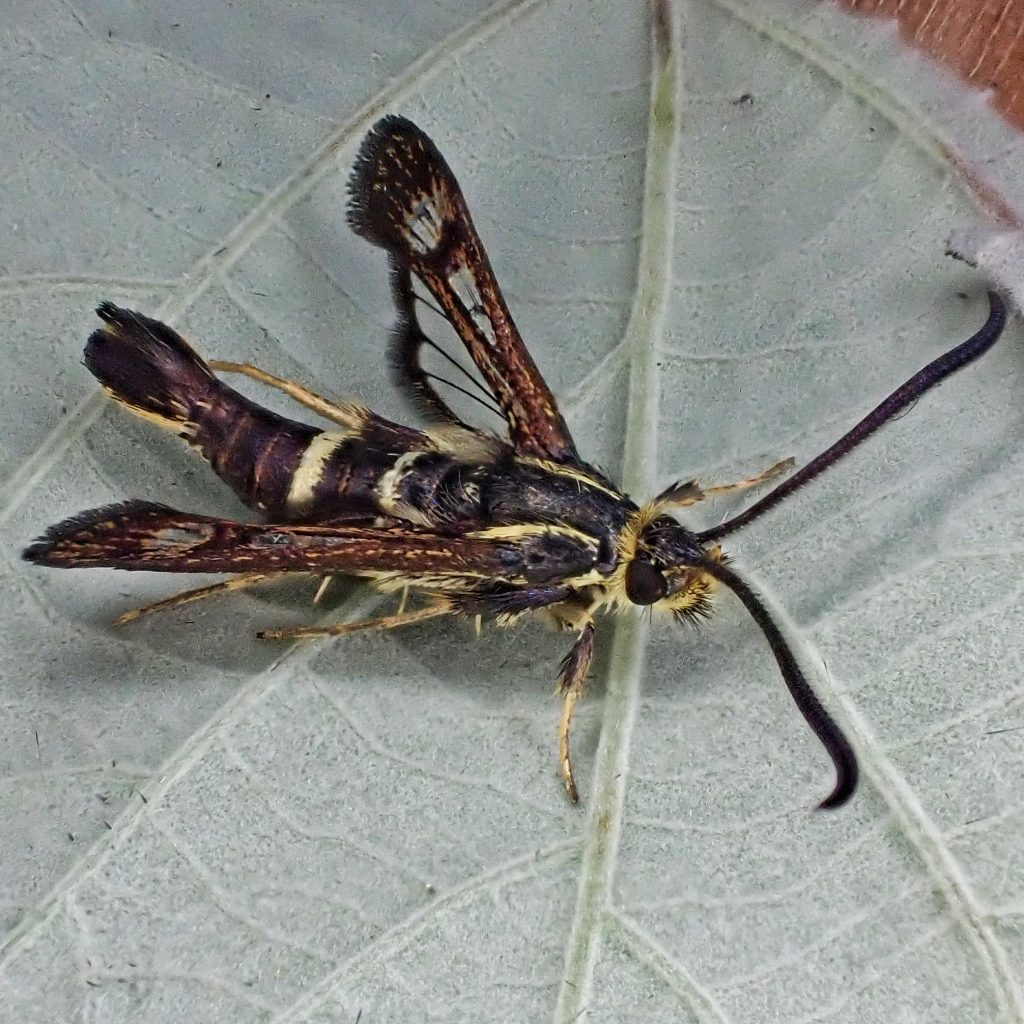
The upshot of my morning chasing syrphid flies with a net was that I didn’t catch any flies, but I did find a Great Golden Digger Wasp (Sphex ichneumoneus, which I’ll be profiling next), and four of these lovely Synanthedon bibionipennis, and was able to secure one of them. However, back home when I thought about photographing it, I was seized by the fear that, like so many small moths, it would be relatively unfazed by refrigeration, and my only specimen would escape without documentation. Because I feared that the little population would soon move on, and despite it now being well over 90⁰, a temperature that often causes even diurnal insects in our region to seek deep shade, I headed back out with both a camera and a net, where I was pleasantly surprised to find two of these wonderful moths perched on accessible leaves in the same blackberry patch where I’d earlier seen them. They remained still long enough for me to get adequate photos, and then, back at home, my original captive turned out to be very cooperative, and after way too many photos, I granted it release into the blackberries that border our apartment building.
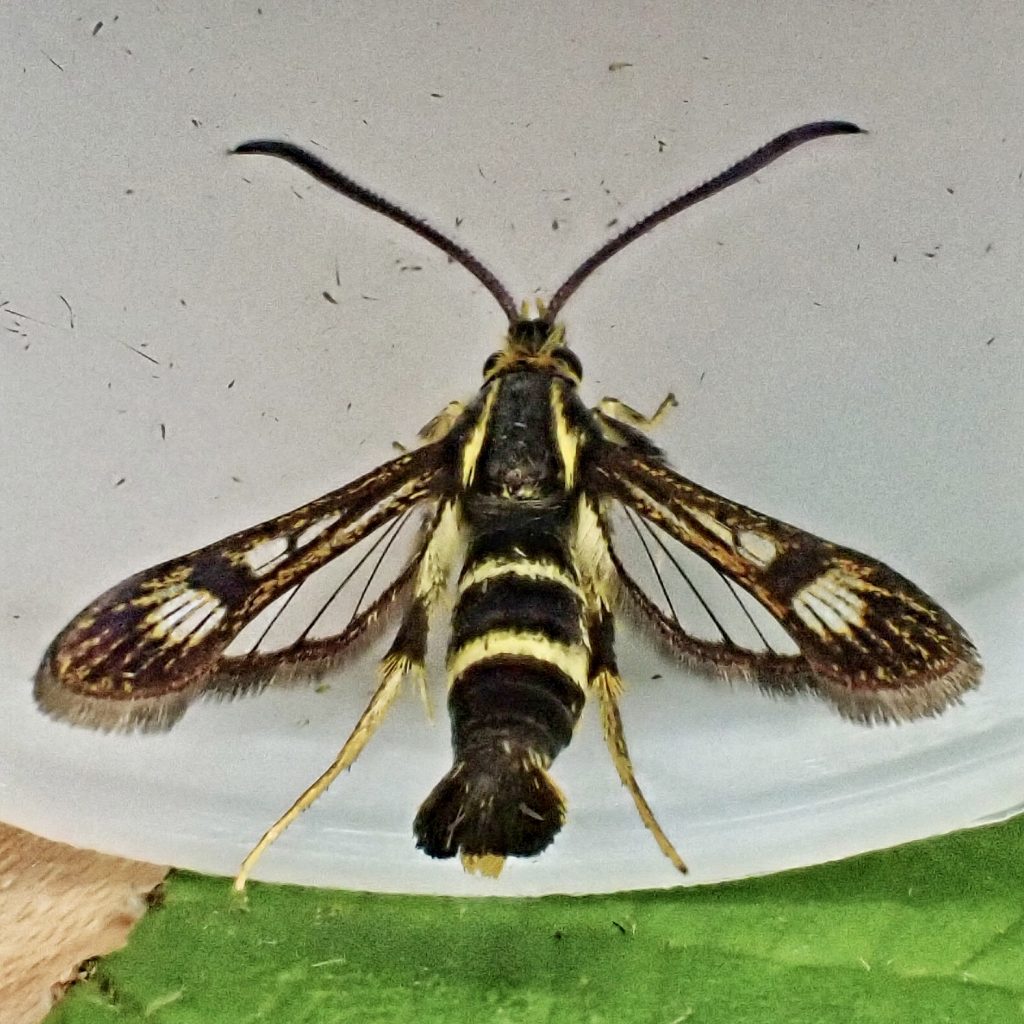
Strawberry crown moths are native to our region, but are considered to be an agricultural pest of strawberries. Larvae do their damage by boring into and eating through the stems near their base, which significantly reduces the plants berry production. Infested plants can often be recognized by their leaves turning red. Apparently removal and shredding or destruction of plants is the only effective cure. So far most infestations have been in the Willamette Vally. It doesn’t seem like this is a major problem, although I’m sure affected farmers would disagree. But really it’s a natural consequence of commercially raising a species that is so similar to one this moth evolved alongside and has been using as a larval host for eons. Fragaria vesca, F. virginiana, and F. chiloensis are all native to the PNW, and a hybrid of Fragaria virginiana and F. chiloensis is the commonly grown commercial strawberry.
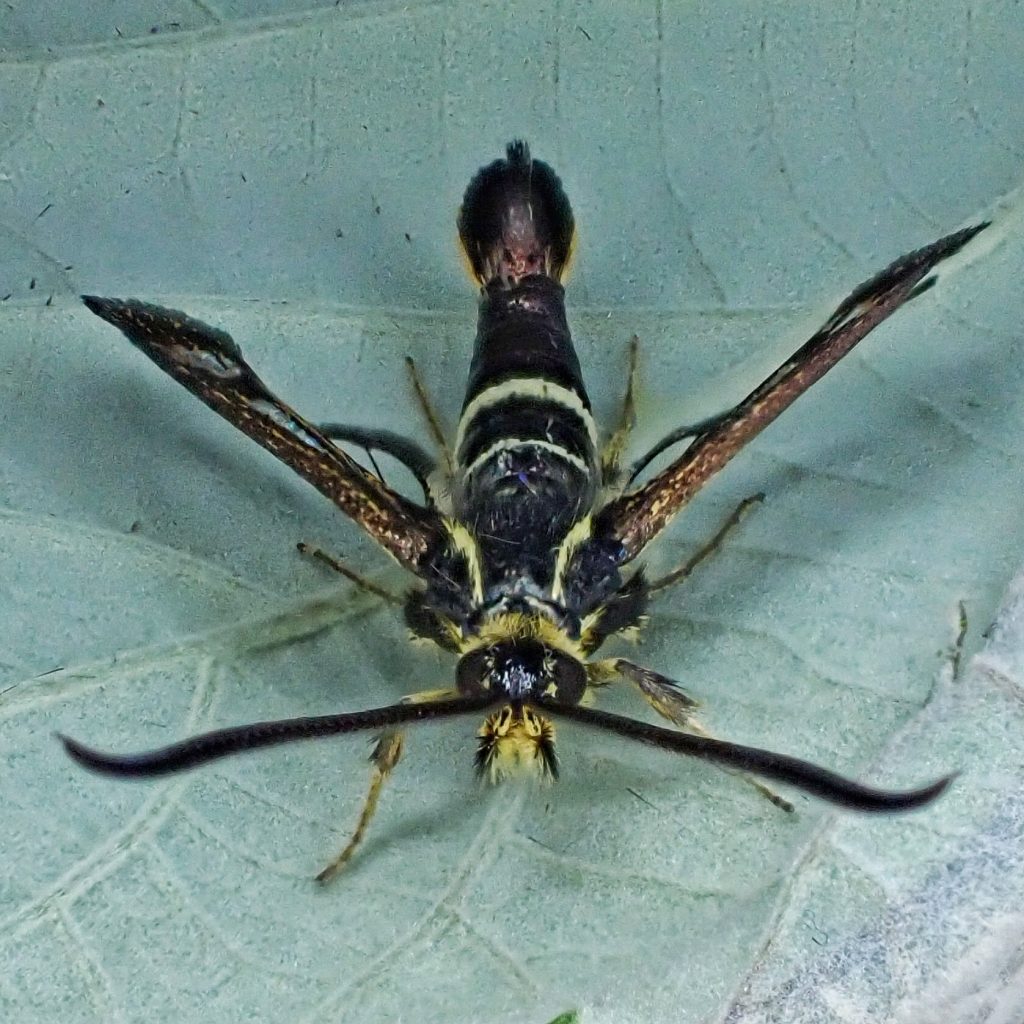
Description– Small (8-10mm long) black moth with yellow abdominal bands, yellow streaks on thorax, bushy, mostly yellow palps, mostly dark forewings filled with yellow, clear hindwings; legs are mostly yellow; number and width of abdominal bands highly variable.
Similar species– Synanthedon resplendens and S. scitula have more streamlined palps; S. sequoiae has mostly clear forewings; S. tipuliformis has very narrow abdominal bands and white on the side of the face; other Synanthedon have red abdominal bands or mostly dark forewings; other clearwing moths larger and/or have larger clear areas on forewings.
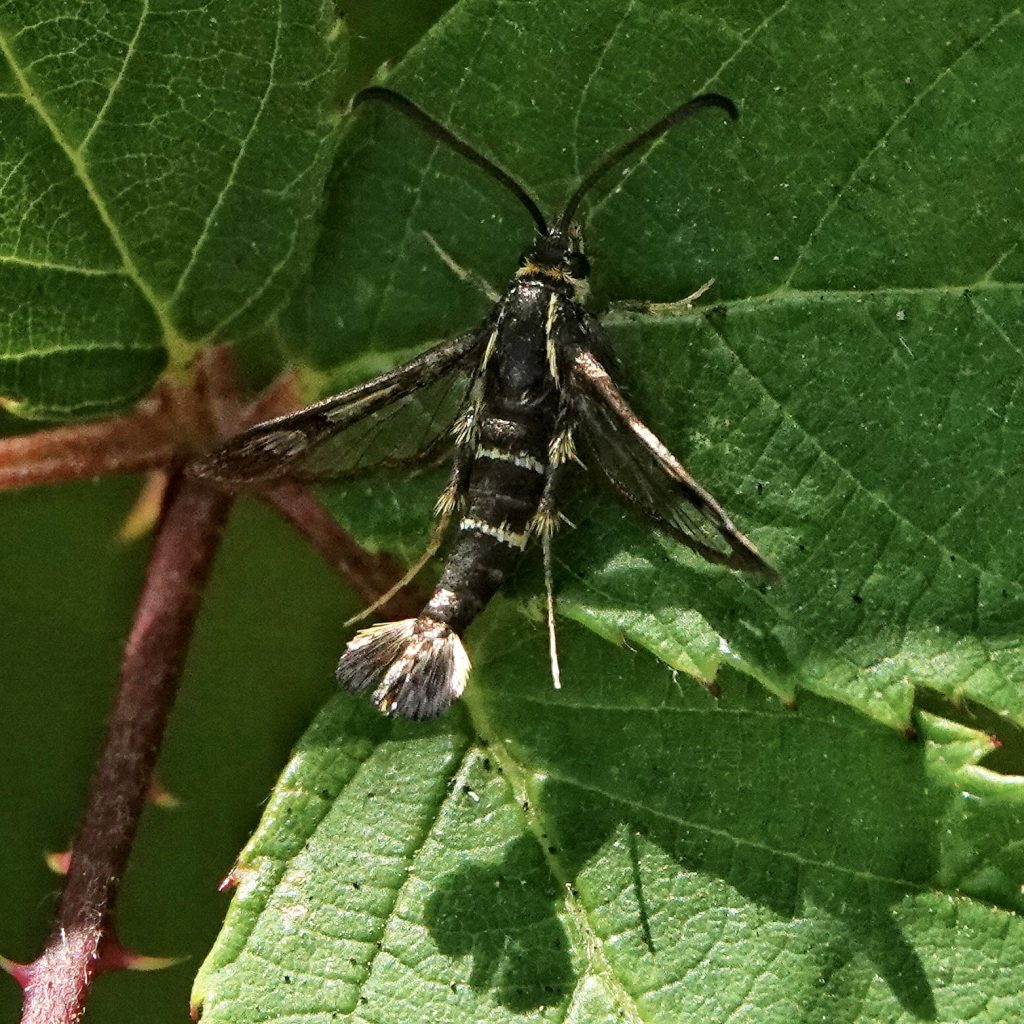
Habitat-Wherever there are roses, blackberries, cinquefoil, strawberry’s, or any of their other larval hosts in the family Rosaceae.
Range-Native to western North America; may be found region wide where its larval hosts occur.
Eats-Larvae hosts are members of Rosaceae, including those in the genera Rubus, Rosa, Potentilla, and Fragaria, amongst others; adults nectar at a variety of flowers
Eaten by-Larvae are probably parasitized by chalcid wasps in the families Eulophidae, Eurytomidae, and Pteromalidae; larvae and adults probably preyed upon by insectivores of all classes.
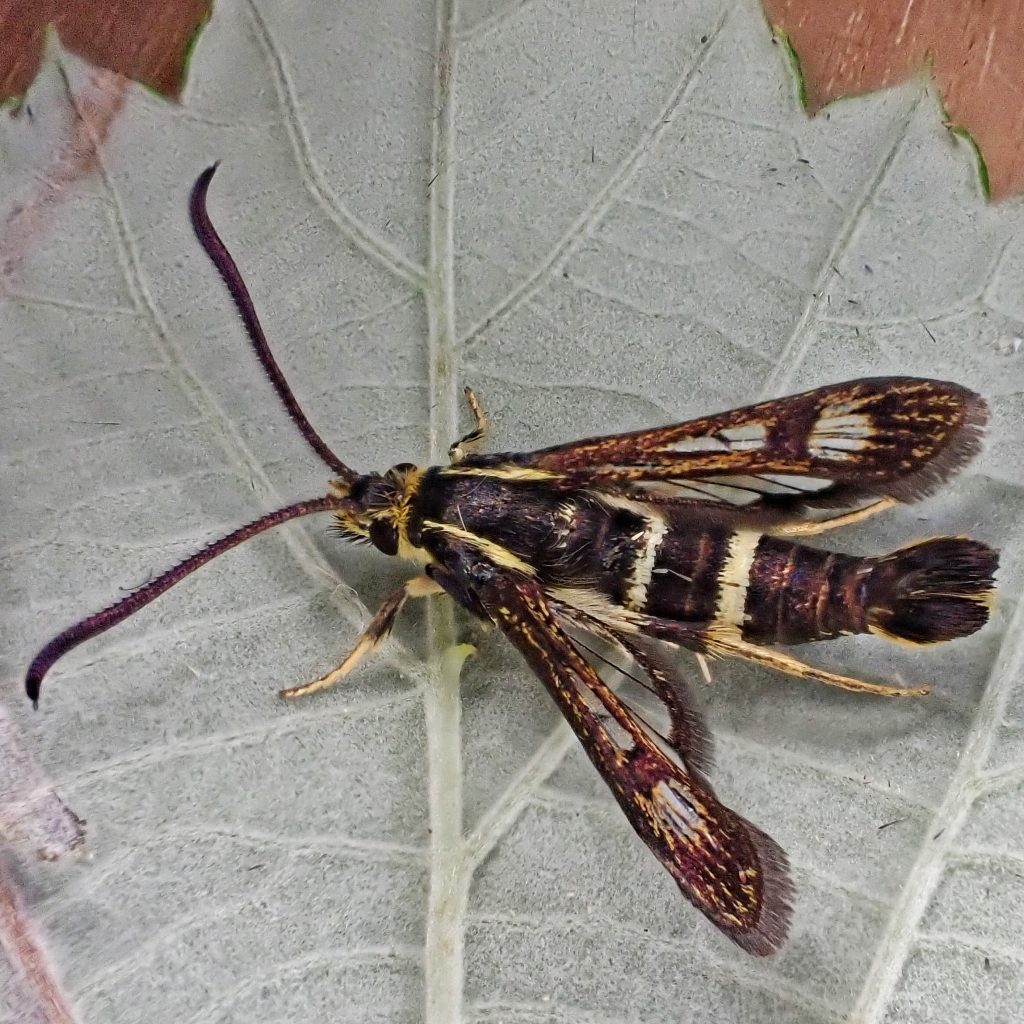
Adults active-May through August
Life cycle-Univoltine ; eggs are laid on leaves of the host plant, and the larvae bore into the roots or the stems near the base; larvae overwinter in diapause in the stems and roots, and resume feeding and finish their larval stages in the spring; pupation lasts about 23 days.
Etymology of names–Synanthedon is probably from the Greek words for ‘with the flowery one’, ‘flowery ones’ being a poetic name for bees, and may be a reference to their wasp mimicry. But I can’t corroborate this. The specific epithet bibionipennis is from the Latin words for ‘small insect’ and ‘wing’, and probably refers to the resemblance of these moths wings to some sorts of flies.

Strawberry-Strawberry crown moth | Pacific Northwest Pest Management Handbooks
Species Synanthedon bibionipennis – Strawberry Crown Moth – Hodges#2576 – BugGuide.Net
Moth Photographers Group – Synanthedon bibionipennis – 2576
https://www.insectidentification.org/insect-description.php?identification=Strawberry-Crown-Moth
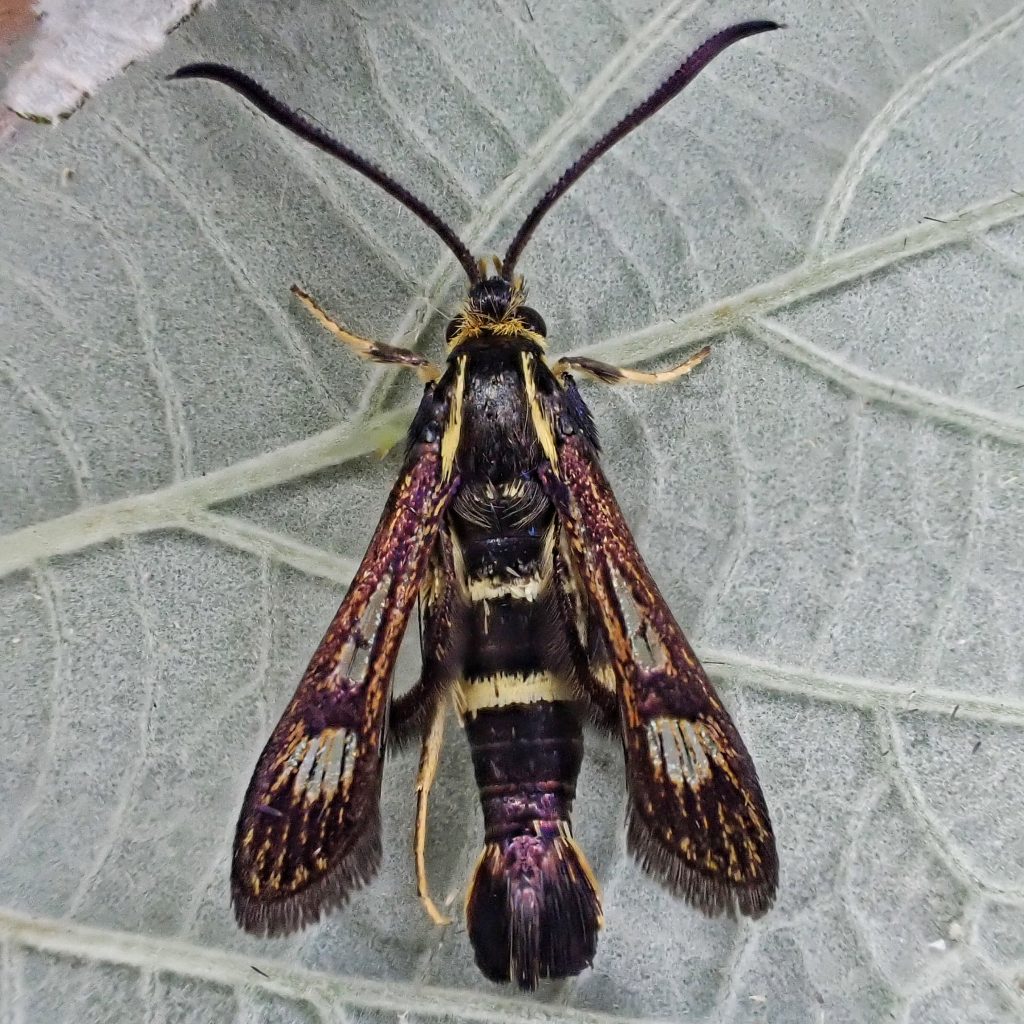
It’s a shrimp with wings. I’m sure of it.
I wonder how it tastes?
That’s funny! It is an interesting looking bug. I’ll have to ask a wren what they taste like😉
Dan Nelson, thank you for this great, informative page on this moth!
I was SO excited to find one in my yard. It was smaller that I expected these to be. I thought it was a wasp of some kind at first, until I looked at my photos!
(You may have seen on fb too.)
Thanks for your words of appreciation, Jeanie! As you can tell, I was also pretty excited to find these! I’m sorry to say I missed your post on this on FB. When and where did you post it?